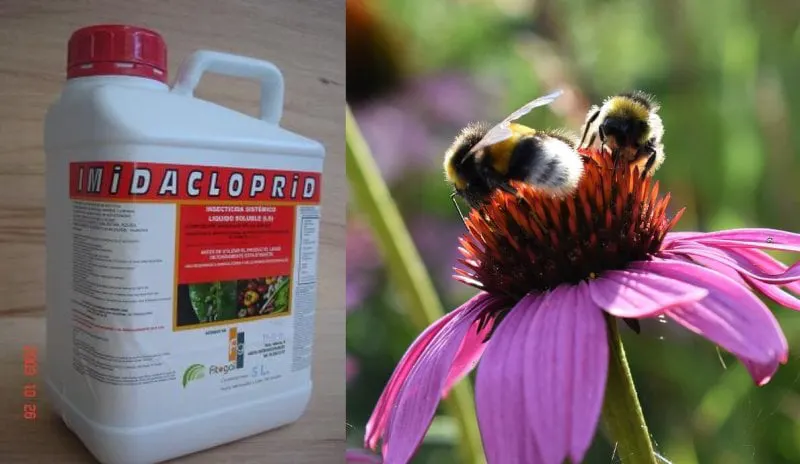‘Risks are acceptable’: On verge of banning neonicotinoid imidacloprid, Canada reverses course, says bees will not be adversely impacted
‘Risks are acceptable’: On verge of banning neonicotinoid imidacloprid, Canada reverses course, says bees will not be adversely impacted


Canada’s pesticide regulator said on [May 18] that farmers could keep using the chemical imidacloprid to control crop-destroying insects under stricter conditions, softening an earlier proposal to ban it.
The chemical, made by Germany’s Bayer AG, is part of the neonicotinoid class of pesticides that farmers have sprayed on crops since the 1990s. Farmers use imidacloprid to protect fruits and vegetables from aphids and beetles.
Environmental groups, who criticized the ruling, say neonics harm beneficial aquatic insects when the chemicals accumulate in ponds and rivers. Those bugs are food for birds and fish.
The Pest Management Regulatory Agency (PMRA) proposed in 2016 phasing out imidacloprid due to those risks, before extending a feedback period.
But in a statement with its final ruling, the agency said that such risks are acceptable within certain limits, after considering new water-monitoring data.
…
PMRA said in March it would also limit use of two other crop chemicals, clothianidin and thiamethoxam, linked to the deaths of aquatic insects.
The European Commission banned outdoor use of all three neonicotinoids in 2018 to protect honeybees, although some countries have granted emergency authorizations. The U.S. Environmental Protection Agency is reviewing the chemicals’ use.
Read the original post

 | Videos | More... |

Video: Nuclear energy will destroy us? Global warming is an existential threat? Chemicals are massacring bees? Donate to the Green Industrial Complex!
 | Bees & Pollinators | More... |

GLP podcast: Science journalism is a mess. Here’s how to fix it

Mosquito massacre: Can we safely tackle malaria with a CRISPR gene drive?

Are we facing an ‘Insect Apocalypse’ caused by ‘intensive, industrial’ farming and agricultural chemicals? The media say yes; Science says ‘no’
 | Infographics | More... |

Infographic: Global regulatory and health research agencies on whether glyphosate causes cancer
 | GMO FAQs | More... |

Why is there controversy over GMO foods but not GMO drugs?

How are GMOs labeled around the world?

How does genetic engineering differ from conventional breeding?
 | GLP Profiles | More... |

Alex Jones: Right-wing conspiracy theorist stokes fear of GMOs, pesticides to sell ‘health supplements’




 Trust issues: What happens when therapists use ChatGPT?
Trust issues: What happens when therapists use ChatGPT? Fighting deforestation with CO2: Biotechnology breakthrough creates sustainable palm oil alternative for cosmetics
Fighting deforestation with CO2: Biotechnology breakthrough creates sustainable palm oil alternative for cosmetics Viewpoint: Video — Big Solar is gobbling up productive agricultural land and hurting farmers yet providing little energy or sustainabilty gains
Viewpoint: Video — Big Solar is gobbling up productive agricultural land and hurting farmers yet providing little energy or sustainabilty gains Viewpoint — Fact checking MAHA mythmakers: How wellness influencers and RFK, Jr. undermine American science and health
Viewpoint — Fact checking MAHA mythmakers: How wellness influencers and RFK, Jr. undermine American science and health California, Washington, Oregon forge immunization alliance to safeguard vaccine access against federal undermining
California, Washington, Oregon forge immunization alliance to safeguard vaccine access against federal undermining 30-year-old tomato line shows genetic resistance to devastating virus
30-year-old tomato line shows genetic resistance to devastating virus The free-range chicken dilemma: Better for birds, but with substantial costs
The free-range chicken dilemma: Better for birds, but with substantial costs ‘You have to treat the brain first’: Rethinking chronic pain with Sanjay Gupta
‘You have to treat the brain first’: Rethinking chronic pain with Sanjay Gupta
